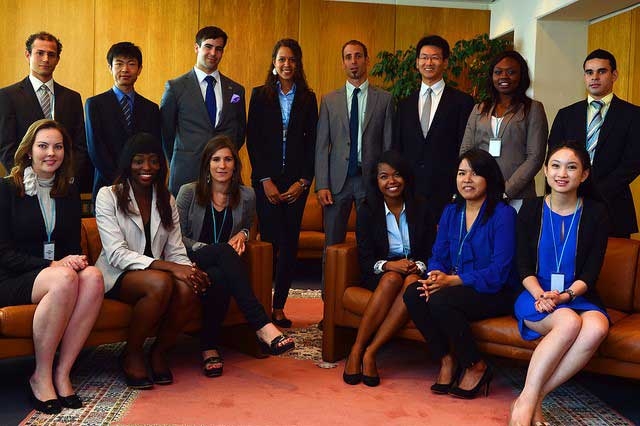International journalism is an expensive endeavour—especially for students. Unless you have a trust fund, or through the power of witchcraft avoided racking up debt during your post-secondary education—you will need money.
Don’t be scared. Scoring funding to complete your dream journalism project is easier than you think. The world is full of people who give money away to ambitious journalism students wanting to get ahead in their career and achieve personal dreams.
It’s your job to get people excited enough about your project to open their wallet and give you money.
Here is some advice you can take to the bank.
Grants or bursaries are traditional avenues to acquire funding. But now, with crowdsourcing available on sites like Kickstarter the possibilities are endless. Kickstarter even has whole category just for journalism projects.
Research institutes, universities, think tanks and philanthropists have set aside money for students looking to complete journalistic projects abroad through grants and bursaries. If you’re in Canada, the International Development Research Centre (IDRC) is a great organization that funds student journalists who cover stories in developing nations.
The only catch with IDRC is that their funds are reserved for Master’s or PhD students. Undergraduate students need not apply. Like all grant funding, there are always limitations to who can apply. Make sure to read the fine print in the application package.
For journalism students at all levels, check with your program administrator about the grants and bursaries available through your school.
So now you know where to source your money, but how do you actually make your proposal successful?
Grant and bursary applications vary in terms of their application requirements. However, one part of the application process, which is nearly the same across the board is the ever-important pitch.
When writing your pitch it’s about being formulaic and concise. It’s your job to get people excited enough about your project to open their wallet and give you money. It sounds daunting, but if played right will yield success.
Pitches for grant and bursary applications are usually confined to a one or two-page explanation of what your project is, and why it matters.
For crowdsourcing, the pitch is even more difficult. Getting your pitch down to one or two sentences is ideal. Think of it as a lede. Journalism students should know what this is. If you’re not a j-schooler, a lede is what journalists call the first sentence of a news article. In this case, the lede should be a sentence or two that sums up for the audience what the news (in this case, your super original story idea) is and why people should care.
This attention-grabbing lede will be ideal for pitching yourself to anonymous donors.
Once you’ve completed the pitch you need to emphasize parts of your projects that will appeal to each individual grant or bursary’s focus. Some grants will focus on international development, some on women’s empowerment and others on engineering technology. Your job is to sell your story to a specific audience.
Grant applications will often call for you to outline the methodology of your project, provide source lists and even submit a preliminary budget. While you will have more space to pitch your idea in a grant application, the rest of the proposal will be more involved than the crowdsourcing pitch. The more detailed the information in your grant proposal, the more the review committee will feel confident you can deliver on your promises.
Each grant will have different requirements. It’s important to assess which grants are meant for a project like yours. You don’t want to waste your time applying for money you’ll never get.
Remember, when applying for student journalism grants it is crucial to make sure you’re not just picking a “topic,” you need to have found a story with which to exhibit a larger theme, topic or trend.
This year, I was the recipient of a $10,000 grant. My grant was successful for a number of reasons. I had taken a course specifically tailored to developing my story and grant proposal. I researched a lot, and tailored each proposal to the specific requirements requested for each grant. It’s not about luck. It’s about hard work and creating detailed proposals that cater to the requirements of the grant or bursary.
Just like a cover letter, you can’t submit the same proposal for each grant or bursary you apply for. Make them unique. This will take time and effort, but in the end it will increase your chances of scoring funding to complete your dream journalism project abroad.
Add this article to your reading list




